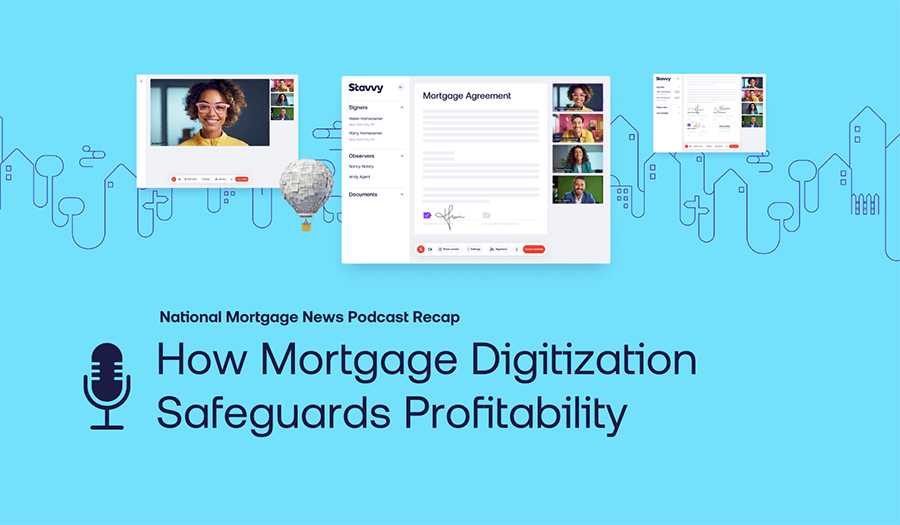On Finside Chats, we’re fortunate to speak with true thought leaders in many aspects of lending and fintech. This time, our guest literally wrote the book on the impact of technology in lending.
Jim Deitch is co-founder and CEO of Teraverde, which helps banks and mortgage bankers streamline operations and improve processes and profitability while staying fully compliant with regulatory requirements. In his spare time, Jim writes. One of his books, Digitally Transforming the Mortgage Banking Industry, explores the technological and cultural changes necessary to realize the full potential of digitization in mortgage lending.
We’re excited to welcome Jim to Finside Chats to discuss what’s ahead at the intersection of lending and technology and why it’s so hard to get there.
Listen now: Overcoming Obstacles to Technology Adoption in Lending
What holds the industry back?
The benefits of integrating more technology into mortgage lending are self-evident – faster transactions, better security, more transparency, improved profitability, and an enhanced consumer experience. But still, the adoption of new tools and technologies in the industry is slow. Jim explains why.
“Think of the New York City skyline. You see all these skyscrapers sticking up in the sky. That's the mortgage banking business,” he begins. “We have all these verticals that stick up, but they don't necessarily have a connection that loops everything together. If you're in the top floor of a skyscraper, you want to get to the next one, it's only maybe a few hundred feet away, but you have to go down the elevators, go out in the street, take the subway, go back up the elevators. That's what the mortgage banking business feels like. It just feels like there are so many interconnected – but not really connected – elements to the business.” Creating those connections is essential for progress toward real improvements for the industry and borrowers.
Eighty-year-old habits are hard to change
Jim adds that the loan approval process is in many ways stuck in 1939, the year Fannie Mae was formed. Even with all the advances in technology since then, loan approval remains maddeningly slow and cumbersome. Loans still pass through many hands. With every handoff comes another chance for a disconnect, delay, or human error. So it takes 6-8 weeks to close a loan instead of ten days.
He contrasts this scenario with other modern consumer experiences. “Applying for a credit card, they're instantly approved. When you shop on Amazon, not only can you pick anything you want, you can get it delivered to your doorstep in relatively no time. And it's just amazing to me that in the mortgage banking process, you get the application in, but then it just goes into this archaic process that, for a lot of reasons, has been very, very difficult to change,” he says.
As Kosta points out, a borrower’s name is rekeyed up to fourteen times in the loan processing cycle as paperwork passes from one hand to the next. With that much inefficiency and opportunity for error built into the process, change is essential, but also that much harder to achieve.
The value of skunkworks
Change is difficult. But if Amazon can use technology to deliver millions of products in a day or less, why can’t lending see the same kind of improvements? Jim suggests that innovation is in many cases being applied in the wrong way – trying to make adaptations to outdated, flawed processes and workflows. He says that’s the wrong starting point.
“Back in the 50s, Marine General P. X. Kelly, working with Lockheed, created a number of aircraft in a skunkworks. They were done really quickly. They were done without the bureaucracy,” he explains. “They were tested and retested and implemented very, very quickly. And it wasn't done by trying to change the production line of Lockheed; it was done in an experimental opportunity to say, what can we do if we had no constraints, no friction.” Jim encourages lenders and other players who want to lead the digital transformation to focus, as Stephen Covey suggests, on the desired end point – a faster, easier closing for the consumer – and have the courage to ignore the slow old ways that have limited the industry for decades.
“Consumers are different now because during the pandemic they've discovered the ‘it-comes-to-me economy.’ I can go on my phone, I can order anything I want, and it appears magically on my doorstep. Once consumers understand what's possible in the physical world, they ask themselves, Why is this so hard in the digital world, particularly with mortgage and residential lending?”
- Jim Deitch
Learn more about how the  is taking real estate beyond documents.
is taking real estate beyond documents.



![[Webinar Recap] Advancing Your Digital Default Servicing Strategy](https://blog.stavvy.com/hubfs/advancing-your-digital-default-servicing-strategy-blog-recap.png)